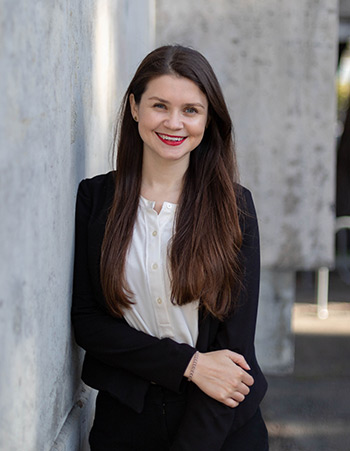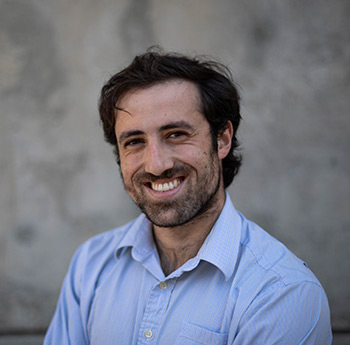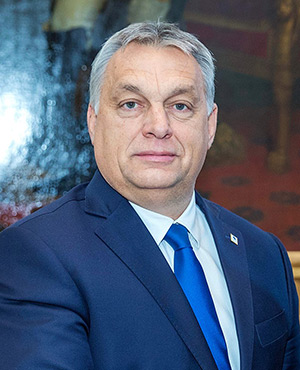By Andrew Cohen
While working for the Artistic Freedom Initiative in New York City before enrolling at Berkeley Law, Annabelle Wilmott ’22 learned how the arts are being increasingly suppressed in Eastern Europe. After enrolling at Berkeley Law, she relished the chance to build a bridge between her new home and AFI — which strives to protect artists from persecution and censorship.

After consulting with Co-Executive Director Sanjay Sethi and Berkeley Law Pro Bono Program Director Deborah Schlosberg, Wilmott joined forces with two other students eager to create an arts-related pro bono project, Alix Vadot ’21 and Veronica Bognot ’21, to launch Arts and Innovation Representation.
“At the time, there were no other Berkeley Law projects with a focus on serving the artistic community,” says Wilmott, a former U.S. State Department Fulbright Fellow.
Students in the project recently played a huge role in developing a jarring report, Systematic Suppression: Hungary’s Arts & Culture in Crisis. Featured by NPR (“In Hungary, the arts are being suppressed by the government, a new report says“), it describes how Hungarian Prime Minister Viktor Orbán has implemented constitutional, legislative, and administrative changes over the past decade to exert control over the arts.
Under Orbán’s leadership, the report explains, Hungary’s previously independent arts and culture sector “has been refashioned as a mechanism for advancing a singular ethno-nationalist narrative.” The findings also detail how Orbán’s party, Fidesz, has asserted state pressure leading to self-censorship among Hungarian artists.
One notable example came in 2018, when the musical Billy Elliot — about an English boy aspiring to become a ballet dancer — was staged in Budapest. Scathing reviews by pro-Orbán media outlets, one of which called it “pointed and unrestrained gay propaganda,” led to the theater’s general director canceling the last 15 performances.
Pressure to conform
“Media conglomerates owned by pro-Fidesz investors have sought to turn the Hungarian public against dissident artists,” says Jonathan Abrams ’22, who co-led Arts and Innovation Representation with Wilmott last year and coordinated Berkeley Law’s contribution to the report with her. “We’re also seeing the use of criminal defamation laws to prosecute prominent satirists for criticizing the Hungarian state.”
Current co-leaders Lainey Meiri ’23 and Megan Taing ’22 teamed with Vanessa Azad LL.M. ’21 and Simone Lieban Levine ’21, working with AFI staff and Columbia University’s Harriman Institute on the report. It incorporates numerous interviews with Hungarian artists and outlines ways to bolster protections for artists and cultural workers through concrete, actionable policies.

“The students played a key function in researching instances of artistic suppression,” Sethi says. “In the next two reports, we are anticipating at least a few of the students will be main authors.”
AFI connects international artists at risk with pro bono immigration representation and assistance with resettlement abroad. Sethi became particularly interested in artistic suppression in Eastern Europe after working at the United Nations Children’s Fund in Moscow and at Columbia’s Public Interest Law Initiative in Budapest.
“Artistic freedom is being restricted globally and in a way that reflects progressive interference with arts and cultural institutions,” he says. “For any law student interested in human rights law, protecting the rights of artists are not just vital for their individual dignity, but critical in protecting democracy and plurality of expression.”
Wilmott and Abrams tactically divided the research responsibilities. First, students examined the legal framework governing Hungary, each covering either a different relevant international law treaty or the Hungarian Constitution. They then researched the mechanisms of suppression used by Orbán’s regime against artistic freedom, how third-party actors are being used to intimidate artists, and Hungary’s misuse of laws to stifle creative expression.
Brazen approach
“One of the most surprising findings was just how overt Fidesz has been in its attempts to control Hungarian arts and culture,” Abrams says. “The Orbán regime has not just quietly revoked funding for dissident artists or removed museum curators. It has openly enshrined its control of arts and culture through legal mechanisms.”

In 2010, Fidesz rewrote the Hungarian Constitution to elevate the Hungarian Academy of Arts, a private association of conservative, nationalistic artists. It is now the main driver of nationwide decisions about arts and culture. Laws removing the prohibition on media monopolies have also led to state-run censorship authorities controlling broadcast, print, and web-based media.
“Projects like this indicate to prospective students that they will have the chance almost immediately after joining Berkeley Law to develop their substantive legal skills while helping communities in need,” Wilmott says. “This initiative allows students to strengthen their research and writing skills, learn about international law and artistic freedom, and advocate for artists at risk.”
In addition to the work on Hungary, Berkeley Law’s team researched the suppression of artistic freedom in Poland and Russia. While those nations have not built state control of the arts into national legislation, Abrams says both are headed in the wrong direction.
“They have likewise engaged in an alarming pattern of art censorship for offending traditional national morality,” he says. “Museum directors have been removed for curating controversial exhibits, artists jailed for displaying works that offend religious feeling, and defamation laws weaponized to target artists critical of the state.”
By exploring suppression of the arts in Hungary, the students involved hope the report underscores the importance of protecting artistic freedom at home and across the world.
“In the United States, we could not imagine life without the First Amendment,” Abrams says. “But that is what Hungary’s ruling party has effectively dismantled.”